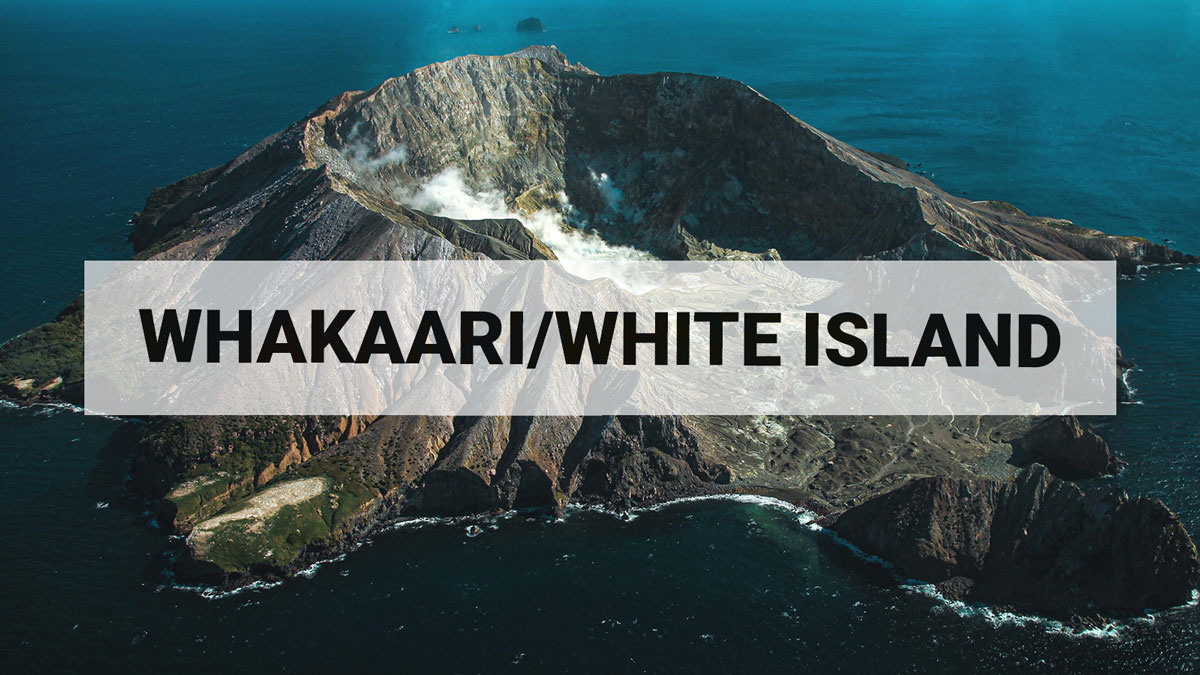
Whakaari/White Island: Volcanic Alert Level lowered to Level 1, minor volcanic unrest continues.
Based on the slowly decreasing level of volcanic activity and confirmation that the recently observed gas pulse was short-lived, the Volcanic Alert Level for Whakaari/White Island is now lowered to Level 1. The Aviation Colour Code remains at Yellow.
Observations and monitoring data over the last few months indicate that Whakaari/White Island has been progressing on a gradual trend back to lower levels of unrest that are typical of the long-term behaviour of this volcano. The decision to lower the Volcanic Alert Level to Level 1 is not as a result of recent changes in a single data set. Instead, it is based on the GNS Science volcano monitoring team’s collective interpretation of all the monitoring data and of their trend over the past few months.
The data sets considered in our interpretation include discharge rate of sulphur dioxide (SO2) and carbon dioxide (CO2) gases, seismic activity, and the temperature of the discharging gases around the December 2019 eruption vents. While the temperature of the gas vents remains high, over 450oC some cooling has been observed over the last few months, indicating a slow decline in heat input from depth. The hot gases that are being emitted from gas vents around the December 2019 eruption vents are still sufficiently hot and are generating a ‘night glow’ that continues to be seen on GeoNet’s night-vision webcams.
New observations included in our interpretation of the activity at the volcano include a further flight to measure volcanic gas output, and improved views from the web camera overlooking the active crater. The gas observations on 12 June show similar rates of gas discharge to our observations on 3 June, confirming that the pulse of gas observed in late-May was short-lived.
This and changes in ground deformation rate in the vent area indicate that while some magma remains at shallow depth, estimated at about 1 km below the surface, gas discharge and ground deformation are not increasing. Seismic activity, specifically the level of volcanic tremor, has been low since February-March.
Taken together, these observations, coupled with consideration that the key data sets were stable or trending downward, the GNS Science’s volcanology monitoring team voted to lower the Volcanic Alert Level to Level 1. This indicates the most likely hazards are those expected during lower levels of volcanic unrest; steam discharge, volcanic gases, earthquakes, landslides and hydrothermal activity. While Volcano Alert Level 1 is associated with these environmental hazards, it doesn’t rule out the possibility of eruptions occurring with little or no warning.
The Volcanic Alert Level reflects the current level of volcanic unrest or activity and is not a forecast of future activity. Also, the Volcanic Alert Level doesn’t indicate the level of risk, it communicates that the volcano is no longer exhibiting moderate-heightened signs of unrest.
Since shortly after the 9 December 2019 eruption, no one has visited the island. As yet, we have not confirmed our plans to return to the island. A visit would include servicing of our equipment, recovery of equipment left on the island before the eruption and sampling the eruption deposits.
Despite GNS Science’s volcanology monitoring team’s decision to lower the Volcanic Alert Level based on careful consideration of recent observations, an eruption could still occur with little or no advanced warning. Plausible triggers for an eruption remain the collapse of unstable material from the crater walls onto the vents, increased release of gas from the shallow magma, and the ingress of water onto the shallow magma body.
Should any explosive activity produce an ash cloud, the likelihood of ash affecting the mainland remains very low. Under suitable weather conditions, the gas and steam plume may be noticed on the mainland as weak acid rain.
The Volcanic Alert Level is now lowered to Level 1. The Aviation Colour Code remains at Yellow.
Volcanic Alert Level 1 indicates the primary hazards are those expected during volcanic unrest; steam discharge, volcanic gas, earthquakes, landslides and hydrothermal activity. While Volcano Alert Level 1 is mostly associated with environmental hazards, eruptions can still occur with little or no warning.
The Volcanic Alert Level reflects the current level of volcanic activity and is not a forecast of future activity.
GNS Science and our National Geohazards Monitoring Centre continue to closely monitor Whakaari/White Island for further signs of activity. Further updates will be provided as needed.
Steven Sherburn Duty Volcanologist
Media Contact: 021 574 541 or media@gns.cri.nz